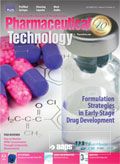Six Sigma and the Path to Quality
Lawrence Yu, deputy director of the Office of Pharmaceutical Quality (OPQ), Center for Drug Evaluation and Research (CDER), and his FDA colleague, Michael Kopcha highlight the importance of Six Sigma approaches to continuous improvement in the pharmaceutical industry.
In June 2017, Lawrence Yu, deputy director of the Office of Pharmaceutical Quality (OPQ), Center for Drug Evaluation and Research (CDER), and his FDA colleague, Michael Kopcha, published a paper on how Six Sigma might help the pharmaceutical industry modernize and improve its quality management systems and overall performance (1).
Yu and Kopcha highlighted the importance of Six Sigma approaches to continuous improvement, as the pharmaceutical industry moves from management- to performance-based regulation, and toward specifications that are based on clinically relevant goals. Yu discussed where he sees Six Sigma going with Pharmaceutical Technology.
PharmTech: Why hasn’t Six Sigma become standard operating procedure for most pharma companies today?
Yu: The pharmaceutical industry has traditionally focused more on the discovery and development of new drugs than continual improvement of manufacturing processes. Further, there are relatively few economic incentives for manufacturers to leverage quality. Consumers are not always able to recognize quality, and it’s been a relatively recent effort for regulators to place greater emphasis on the measurement of quality. This has created an environment in which there can be a reluctance to adopt Six Sigma and introduce innovations in manufacturing. Still, while Six Sigma is not necessarily standard operating procedure in the industry, there are several examples of pharma companies that have overcome any misunderstandings or problems and embraced it to see clear economic benefits including greatly reduced error rates and cost savings.
PharmTech: What would be needed to make Six Sigma more widely used in pharma?
Yu: The path to get there includes economic drivers, performance-based regulation, quality by design, advanced manufacturing technologies, and continuous improvement and operational excellence. To fully realize the benefits of Six Sigma, there need to be economic factors that recognize and incentivize quality. From the regulatory perspective, shifts from predominantly management-based regulation to performance-based regulation can give industry the flexibility to more readily address and improve quality. Clearly, emerging manufacturing technologies can help with the drive toward Six Sigma, including continuous manufacturing and advanced [process analytical technology (PAT)]. The pharmaceutical sector must embrace quality by design while adopting these new technologies. Finally, continuous improvement and operational excellence must be part of the overall effort to improve the quality of new and legacy drug products.
PharmTech: Are there certain areas where, as articulated for discrete manufacturing, Six Sigma will not yield results for pharma?
Yu: In other industries, product and process understanding is the norm. Optimization is always a critical step in improving quality and reducing cost. In the pharmaceutical industry, ‘compliance’ with regulatory expectations is often the critical goal. To better serve the patient and move beyond compliance, the industry should emphasize quality, and regulators should create an environment amenable to innovation. One example of such innovation is continuous manufacturing; another is PAT. However, given that Six Sigma is a set of techniques for process improvement, manufacturers can apply it whether their process is discrete or continuous, provided they focus on specifications based on clinical relevance.
PharmTech: What is the most pragmatic way to ease a company into using the approach? What steps are needed?
Yu: Perhaps most importantly, a company needs to commit to quality and recognize that quality-focused efforts can be cost effective. As a step, a company can start to use process capability to measure quality, something the pharmaceutical industry has widely adopted over the past several years. Another powerful step is embracing and committing to a culture of quality and continuous improvement. To foster a company taking this approach, regulators need to create an environment that appropriately balances risks with regulatory expectations (for example, regarding testing and inspections) based on a company’s level of process capability and other quality matrices.
PharmTech: What will be needed to move the overall sigma level of the industry?
Yu: The ultimate focus for regulators and industry should always be on benefit to the patient. As improvements in pharmaceutical quality directly benefit patients by helping avoid potential shortages and product recalls, it is in everyone’s interest to raise the level of quality above its current state.
A key step is collectively embracing and committing to a culture of quality. In a culture of quality, employees not only follow quality guidelines, but consistently observe quality-focused actions and receive quality-focused communications. This culture requires consistent senior management support and clearly communicated vision, values, and quality goals. For example, performance expectations for individuals throughout a company can clearly link to quality goals and initiatives.
Reference
1. L. Yu and M. Kopcha, International Journal of Pharmaceutics, 528 (2017), pp. 354-359 (June 2017).
Article Details
Pharmaceutical Technology
Vol. 41, No. 10
Page: 78
Citation
When referring to this article, please cite it as A. Shanley, “Six Sigma and the Path to Quality," Pharmaceutical Technology 41 (10) 2017.
